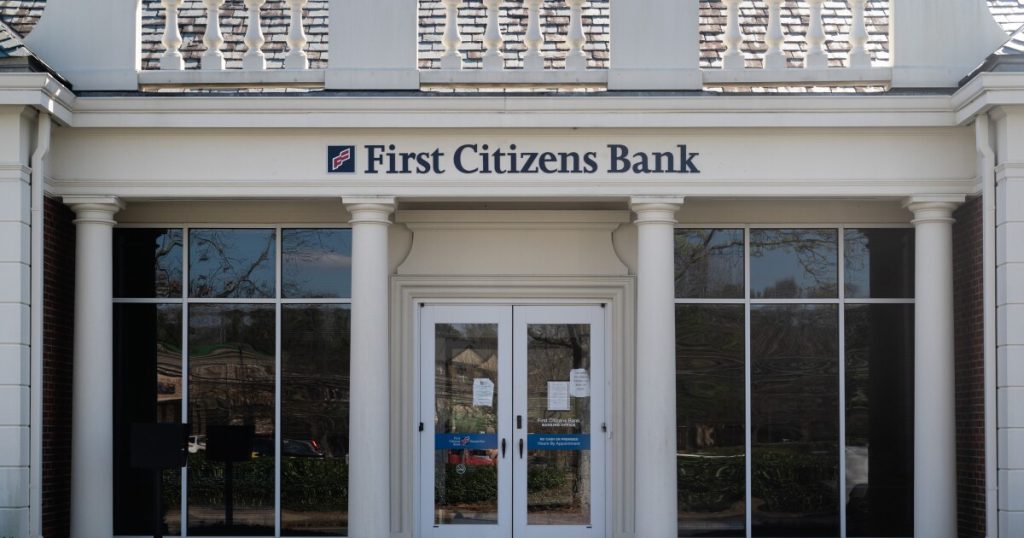Elijah Nouvelage/Bloomberg
First Citizens BancShares managed to beat investors’ second-quarter earnings expectations as the $230 billion-asset company eked out a 2% gain in net interest income — its first sequential uptick in spread revenue in a year.
The Raleigh, North Carolina-based First Citizens reported a $575 million profit for the quarter ending June 30, up nearly 20% from the first quarter. Second-quarter net income was down 19% from a year ago, as salary costs and investments pushed operating expenses higher.
In earnings-per-share terms, First Citizens reported $42.63, whereas analysts had forecast $39.13, according to S&P.
“Our key earnings metrics were solid,” Chairman and CEO Frank Holding said Friday on a conference call with analysts, arguing that the company is demonstrating the strength of its diversified business lines. “I like our positioning to capitalize on growth opportunities while continuing to optimize our balance sheet to enhance our processes and systems to maximize efficiency and productivity.”
First Citizens also doubled down on its strategy of
The bank bought back shares totaling $613 million in the quarter ending June 30, according to Chief Financial Officer Craig Nix, who said that quarterly buybacks are likely to increase to about $900 million through the remainder of 2025 and into 2026.
“This reflects our commitments to long-term value creation and delivering returns to our stockholders,” Holding said.
While loans were flat sequentially, ending the second quarter at $141.3 billion, First Citizens’ bottom line benefited from a lower cost of funds, increased fee income and reduced credit costs. Indeed, net charge-offs of $119 million were down 26% from year-end 2024.
“We are not seeing any further trends that would signal wider credit-quality concerns and believe we are well reserved,” Nix said on the conference call.
First Citizens struck a cautious tone on loan growth, projecting that its portfolio will total $143 billion-$146 billion at the end of the year, down from the previous guidance of $144 billion-$147 billion.
The company’s soft loan growth in the second quarter — and its tepid forecast — marked a contrast with several other regional and superregional banks that reported
But Nix said First Citizens could see loan growth accelerate in the second half of 2025 “if the [Federal Reserve’s] monetary easing cycle begins to take effect and we see increased levels of venture capital investment and capital markets activity.”
Loans in First Citizens’ Silicon Valley Bank division declined 1% to $37.5 billion in the second quarter, as loan payoffs and paydowns outpaced new loan funding. A turnaround may be around the corner, however.
“While we remain guarded on overall asset growth levels in this business, we are seeing early signs that the second half of the year could spark additional activity,” Nix said.
First Citizens reported deposits totaling $159.9 billion on June 30, up 0.4% on a linked-quarter basis and 6% year over year. Annual deposit growth included $863 million in new noninterest bearing demand deposits. Such funds comprised 26% of total deposits on June 30.
First Citizens reported a 6% annual jump in noninterest income, driven in large part by increased revenue generated by the company’s railcar leasing business. Rail revenue totaled $272 million on June 30, up 5% from the same period in 2024. First Citizens has held onto its railcar assets even as other banks, including most recently Wells Fargo,
“We’re very encouraged where we are,” Elliot Howard, First Citizens’ executive director for financial planning, said on the conference call. “There is further runway from a revenue standpoint.”

